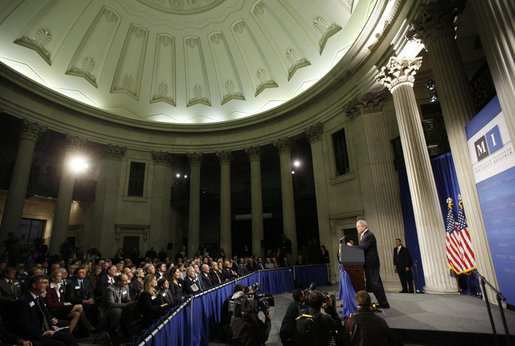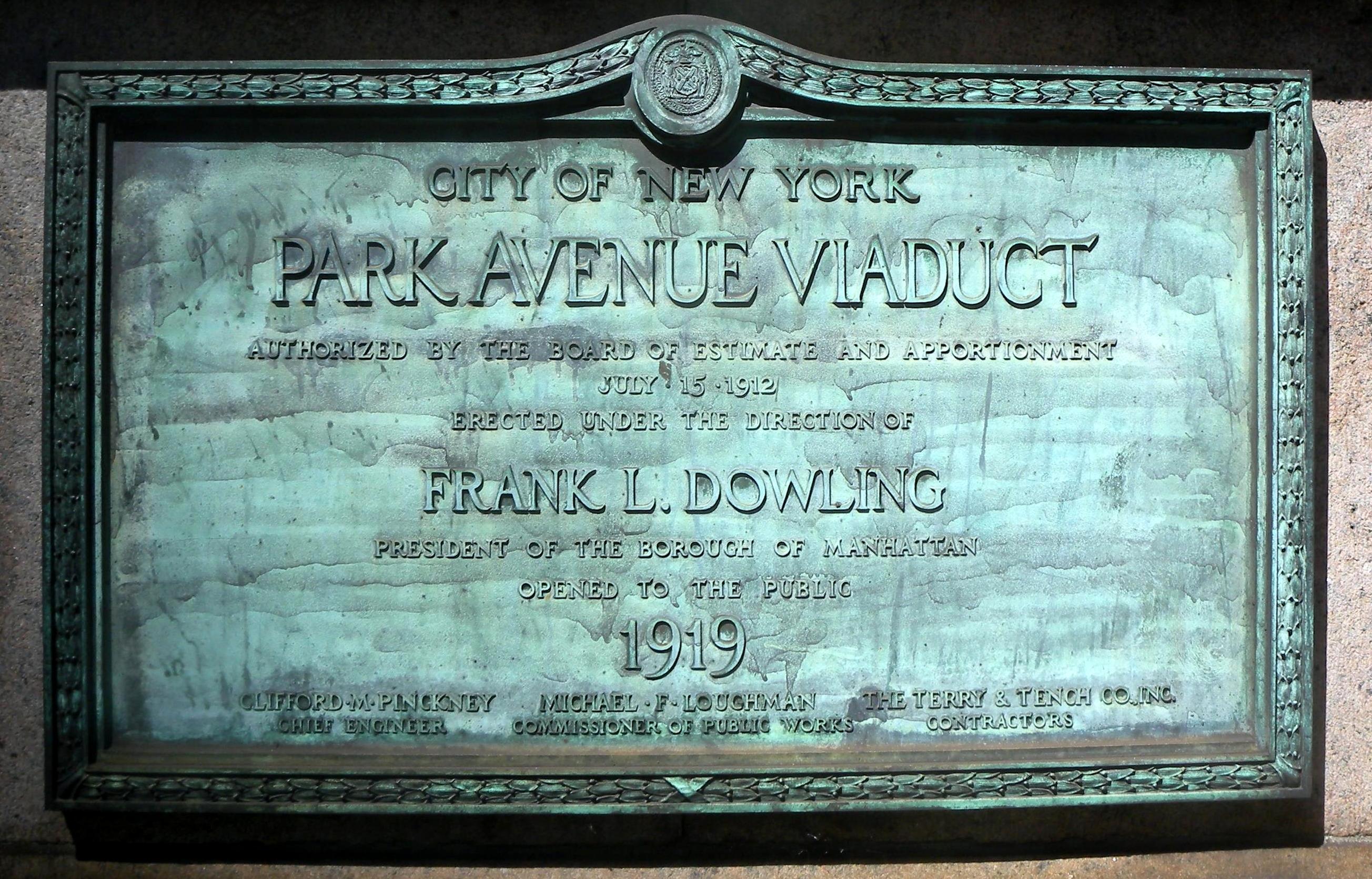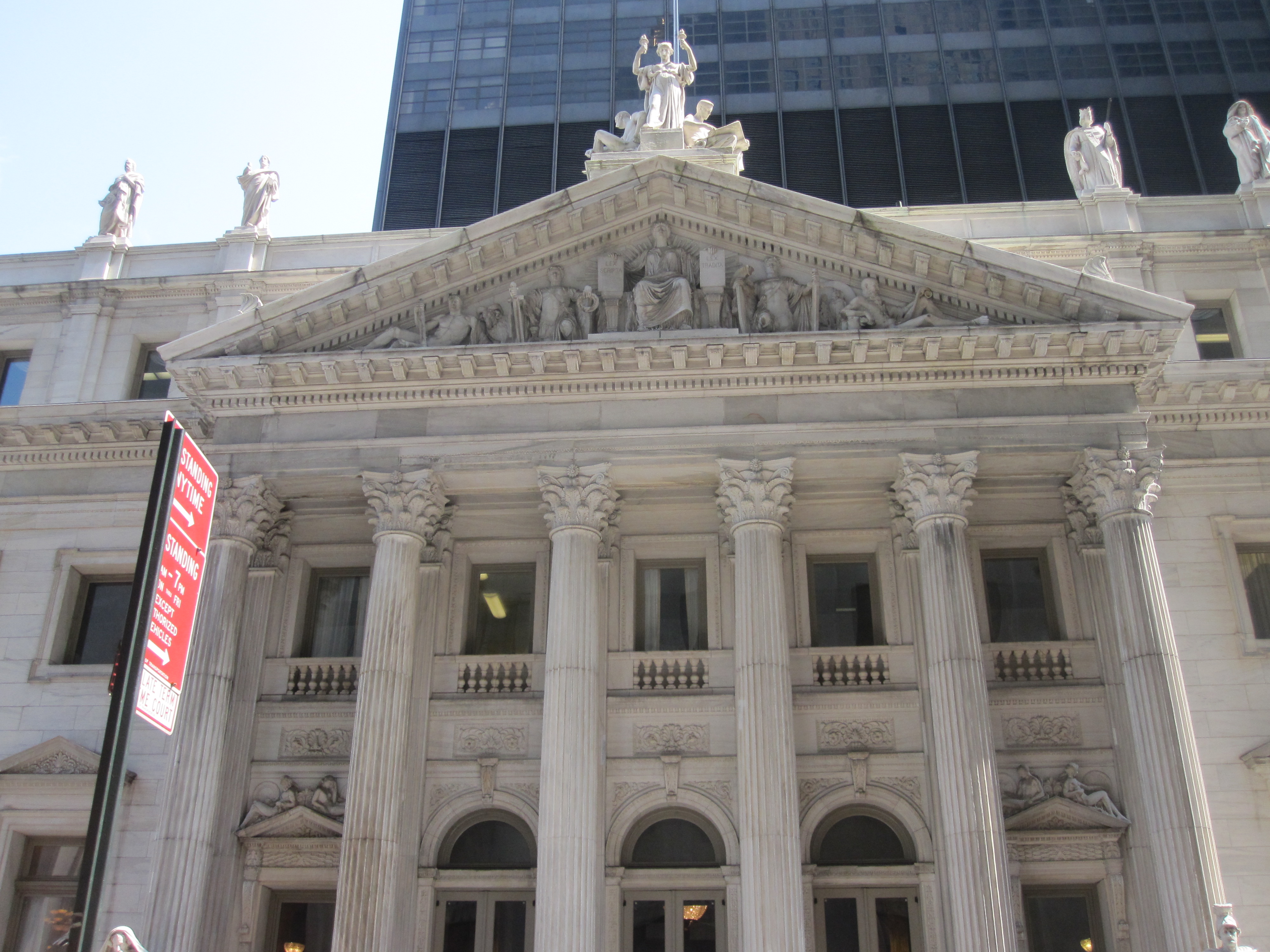|
Vanderbilt Avenue
Vanderbilt Avenue is the name of three thoroughfares in the New York City boroughs of Brooklyn, Manhattan, and Staten Island. They were named after Cornelius Vanderbilt (1794–1877), the builder of Grand Central Terminal in Midtown Manhattan. Brooklyn Vanderbilt Avenue in Brooklyn carries traffic north and south between Grand Army Plaza () and Flushing Avenue at the Vanderbilt Avenue gate of the Brooklyn Navy Yard (). This avenue serves the neighborhoods of Fort Greene and Prospect Heights. Landmarks include the old Public School 9 and Public School 9 Annex buildings at the corner of Sterling Place, and Bishop Loughlin Memorial High School at Greene Avenue. The B69 bus, which replaced a streetcar line in 1950, runs on this avenue. There were also two now-demolished subway stations on the BMT Myrtle Avenue Line and BMT Fulton Street Line built here. Manhattan Vanderbilt Avenue in Manhattan runs from 43rd Street to 47th Street between Park Avenue and Madison Avenue. It ... [...More Info...] [...Related Items...] OR: [Wikipedia] [Google] [Baidu] |
Vanderbilt Avenue (BMT Myrtle Avenue Line)
The Vanderbilt Avenue station was a station on the now-demolished BMT Myrtle Avenue Line and BMT Lexington Avenue Line in Brooklyn, New York City. It had two tracks and one island platform. It closed on October 4, 1969, along with the rest of the elevated structure, after a fire. The next stop to the north was Washington Avenue Washington Avenue may refer to: United States * Washington Avenue (Miami Beach) in Miami Beach, Florida * Washington Avenue (Milford Mill, Maryland) * Washington Avenue (Towson, Maryland) * Washington Avenue (Minneapolis), a major street in Minne ..., and to the south was Navy Street. References * {{NYCS stations navbox, myrtle=yes Defunct BMT Myrtle Avenue Line stations Former elevated and subway stations in Brooklyn Railway stations in the United States opened in 1888 Railway stations closed in 1969 1888 establishments in New York (state) 1969 disestablishments in New York (state) Defunct New York City Subway stations located aboveground ... [...More Info...] [...Related Items...] OR: [Wikipedia] [Google] [Baidu] |
Brooklyn
Brooklyn () is a borough of New York City, coextensive with Kings County, in the U.S. state of New York. Kings County is the most populous county in the State of New York, and the second-most densely populated county in the United States, behind New York County (Manhattan). Brooklyn is also New York City's most populous borough,2010 Gazetteer for New York State . Retrieved September 18, 2016. with 2,736,074 residents in 2020. Named after the Dutch village of Breukelen, Brooklyn is located on the w ... [...More Info...] [...Related Items...] OR: [Wikipedia] [Google] [Baidu] |
Greene Avenue
Greene Avenue (officially in french: avenue Greene) is a north-south street in Westmount and Montreal, Quebec, Canada. It links Sherbrooke Street West in the north and Saint-Ambroise Street West, near the Atwater Market and Lachine Canal in the south. North of Sherbrooke, it is known as Mount Pleasant Avenue. Greene Avenue is locally known for its upscale shops, restaurants and antique dealers. Notable structures and businesses on the street include the western entrance to Westmount Square Westmount Square is a residential and office complex located in Westmount, Quebec, Canada. There are two residential apartment buildings and two office buildings. These towers sit atop an underground shopping centre consisting of thirty-five sh ... and the studios for radio station CKGM. Greene Avenue was said to be given its name in 1884, after the area's former landowner, Edward K. Greene, although other sources point to G.A. Greene as the namesake. Further reading Ville de Montréal ... [...More Info...] [...Related Items...] OR: [Wikipedia] [Google] [Baidu] |
Manhattan Institute For Policy Research
The Manhattan Institute for Policy Research (renamed in 1981 from the International Center for Economic Policy Studies) is a conservative American think tank focused on domestic policy and urban affairs, established in Manhattan in 1978 by Antony Fisher and William J. Casey.R. Emmett Tyrrell, ''After the Hangover: The Conservatives' Road to Recovery'' (2010), p. 187.Jason Stahl, ''Right Moves: The Conservative Think Tank in American Political Culture Since 1945'' (2016), p. 112. The institute has produced books, articles, interviews, speeches, op-eds, and the quarterly publication ''City Journal''. History Foundational years (1978–1980) The International Center for Economic Policy Studies (ICEPS) was founded by Antony Fisher and William J. Casey in 1978. ICEPS changed its name to the Manhattan Institute for Policy Research in 1981. The institute's first president was Jeffrey Bell, who was succeeded in 1980 by William H. Hammett, who served until 1995. In 1980, the institute ... [...More Info...] [...Related Items...] OR: [Wikipedia] [Google] [Baidu] |
Yale Club Of New York City
The Yale Club of New York City, commonly called The Yale Club, is a private club in Midtown Manhattan, New York City. Its membership is restricted almost entirely to alumni and faculty of Yale University. The Yale Club has a worldwide membership of over 11,000. The 22-story clubhouse at 50 Vanderbilt Avenue, opened in 1915, was the world's largest clubhouse upon its completion and is still the largest college clubhouse ever built. Clubhouse The club is located at 50 Vanderbilt Avenue, at the intersection of East 44th Street, across Vanderbilt Avenue from Grand Central Terminal and the MetLife Building. The clubhouse stands on Clubhouse Row, a block from the Harvard Club of New York at 27 West 44th, Penn Club of New York at 30 West 44th, New York Yacht Club at 37 West 44th, and Cornell Club of New York at 6 East 44th; and two blocks away from the Princeton Club of New York at 15 West 43rd (and Fifth Avenue) for inter-club events. The Yale Club shares its facility with th ... [...More Info...] [...Related Items...] OR: [Wikipedia] [Google] [Baidu] |
Park Avenue Viaduct
The Park Avenue Viaduct, also known as the Pershing Square Viaduct, is a roadway in Manhattan in New York City. It carries vehicular traffic on Park Avenue from 40th to 46th Streets around Grand Central Terminal and the MetLife Building, then through the Helmsley Building. All three buildings lie across the north–south line of the avenue. The viaduct itself is composed of two sections: a steel viaduct with two roadways from 40th to 42nd Streets, as well as a pair of roadways between 42nd and 46th Streets. The section from 40th to 42nd Streets was designated a New York City landmark in 1980 and was listed on the National Register of Historic Places in 1983. The street-level service roads of Park Avenue, which flank the viaduct between 40th and 42nd Streets, are called Pershing Square. The viaduct was first proposed by New York Central Railroad president William J. Wilgus in 1900 as part of the construction of Grand Central Terminal. Construction on the viaduct's western le ... [...More Info...] [...Related Items...] OR: [Wikipedia] [Google] [Baidu] |
The New York Times
''The New York Times'' (''the Times'', ''NYT'', or the Gray Lady) is a daily newspaper based in New York City with a worldwide readership reported in 2020 to comprise a declining 840,000 paid print subscribers, and a growing 6 million paid digital subscribers. It also is a producer of popular podcasts such as '' The Daily''. Founded in 1851 by Henry Jarvis Raymond and George Jones, it was initially published by Raymond, Jones & Company. The ''Times'' has won 132 Pulitzer Prizes, the most of any newspaper, and has long been regarded as a national " newspaper of record". For print it is ranked 18th in the world by circulation and 3rd in the U.S. The paper is owned by the New York Times Company, which is publicly traded. It has been governed by the Sulzberger family since 1896, through a dual-class share structure after its shares became publicly traded. A. G. Sulzberger, the paper's publisher and the company's chairman, is the fifth generation of the family to head the pa ... [...More Info...] [...Related Items...] OR: [Wikipedia] [Google] [Baidu] |
Grand Central Depot
Grand Central Terminal is a major commuter rail terminal in Midtown Manhattan, New York City, serving the Metro-North Railroad's Harlem, Hudson and New Haven Lines. It is the most recent of three functionally similar buildings on the same site. The current structure was built by and named for the New York Central & Hudson River Railroad, though it also served the New York, New Haven and Hartford Railroad. Passenger service has continued under the successors of the New York Central and New Haven railroads. Grand Central Terminal arose from a need to build a central station for three railroads in present-day Midtown Manhattan. In 1871, the magnate "Commodore" Cornelius Vanderbilt created Grand Central Depot for the New York Central & Hudson River, New York and Harlem Railroad, and New Haven railroads. Due to rapid growth, the depot was reconstructed and renamed Grand Central Station by 1900. The current structure, designed by the firms Reed and Stem and Warren and Wetmore, ... [...More Info...] [...Related Items...] OR: [Wikipedia] [Google] [Baidu] |
Madison Avenue
Madison Avenue is a north-south avenue in the borough of Manhattan in New York City, United States, that carries northbound one-way traffic. It runs from Madison Square (at 23rd Street) to meet the southbound Harlem River Drive at 142nd Street. In doing so, it passes through Midtown, the Upper East Side (including Carnegie Hill), East Harlem, and Harlem. It is named after and arises from Madison Square, which is itself named after James Madison, the fourth President of the United States. Madison Avenue was not part of the original Manhattan street grid established in the Commissioners' Plan of 1811, and was carved between Park Avenue (formerly Fourth) and Fifth Avenue in 1836, due to the effort of lawyer and real estate developer Samuel B. Ruggles, who had previously purchased and developed New York's Gramercy Park in 1831, and convinced the authorities to create Lexington Avenue and Irving Place between Fourth Avenue (now Park Avenue South) and Third Avenue in order to s ... [...More Info...] [...Related Items...] OR: [Wikipedia] [Google] [Baidu] |
Park Avenue
Park Avenue is a wide New York City boulevard which carries north and southbound traffic in the boroughs of Manhattan and the Bronx. For most of the road's length in Manhattan, it runs parallel to Madison Avenue to the west and Lexington Avenue to the east. Park Avenue's entire length was formerly called Fourth Avenue; the title still applies to the section between Cooper Square and 14th Street. The avenue is called Union Square East between 14th and 17th Streets, and Park Avenue South between 17th and 32nd Streets. History Early years and railroad construction The entirety of Park Avenue was originally known as Fourth Avenue and carried the tracks of the New York and Harlem Railroad starting in the 1830s. The railroad originally ran through an open cut through Murray Hill, which was covered with grates and grass between 34th and 40th Street in the early 1850s. A section of this "park" was later renamed Park Avenue in 1860. Park Avenue's original southern terminus was at ... [...More Info...] [...Related Items...] OR: [Wikipedia] [Google] [Baidu] |
47th Street (Manhattan)
47th Street is an east–west running street between First Avenue and the West Side Highway in the borough of Manhattan in New York City. Traffic runs one way along the street, from east to west, starting at the headquarters of the United Nations. The street features the Diamond District in a single block (where the street is also known as Diamond Jewelry Way) and also courses through Times Square. Notable locations *The Factory was Andy Warhol's original New York City studio from 1963 to 1968, although his later studios were known as The Factory as well. The Factory was located on the fifth floor at 231 East 47th Street, between Second Avenue and Third Avenue. *The top duplex of the Dyckman's Jewelry Exchange at 73 West 47th Street was Russian emigrant artist Alexander Ney's studio and home for four decades (1974–2015) following his immigration from the Soviet Union. *After opening in 1920 on West 45th Street, the Gotham Book Mart later moved to 51 West 47th Street and the ... [...More Info...] [...Related Items...] OR: [Wikipedia] [Google] [Baidu] |
43rd Street (Manhattan)
The New York City borough of Manhattan contains 214 numbered east–west streets ranging from 1st to 228th, the majority of them designated in the Commissioners' Plan of 1811. These streets do not run exactly east–west, because the grid plan is aligned with the Hudson River, rather than with the cardinal directions. Thus, the majority of the Manhattan grid's "west" is approximately 29 degrees north of true west; the angle differs above 155th Street, where the grid initially ended. The grid now covers the length of the island from 14th Street north. All numbered streets carry an East or West prefix – for example, East 10th Street or West 10th Street – which is demarcated at Broadway below 8th Street, and at Fifth Avenue at 8th Street and above. The numbered streets carry crosstown traffic. In general, but with numerous exceptions, even-numbered streets are one-way eastbound and odd-numbered streets are one-way westbound. Most wider streets, and a few of the narrow ... [...More Info...] [...Related Items...] OR: [Wikipedia] [Google] [Baidu] |


.png)


